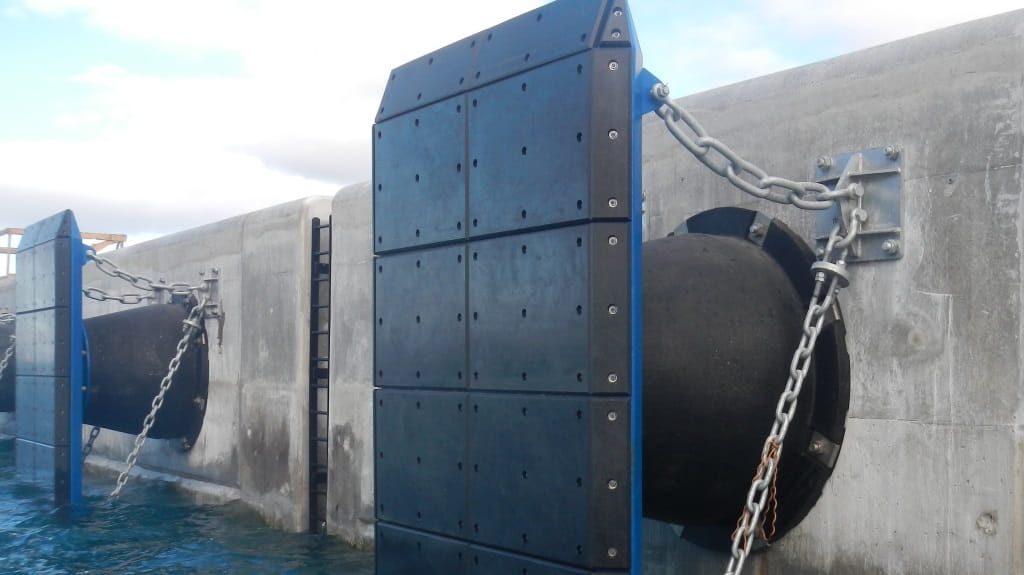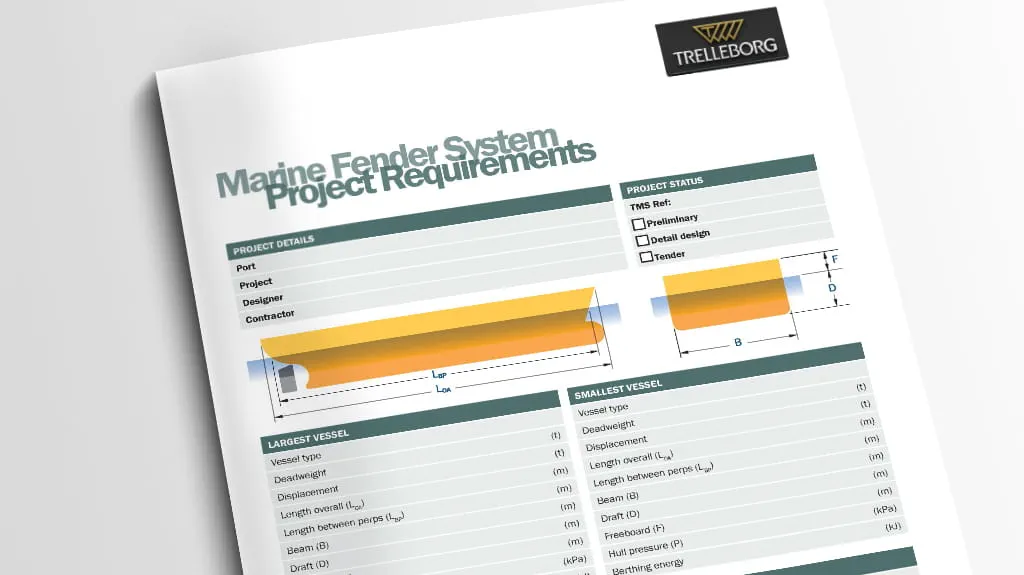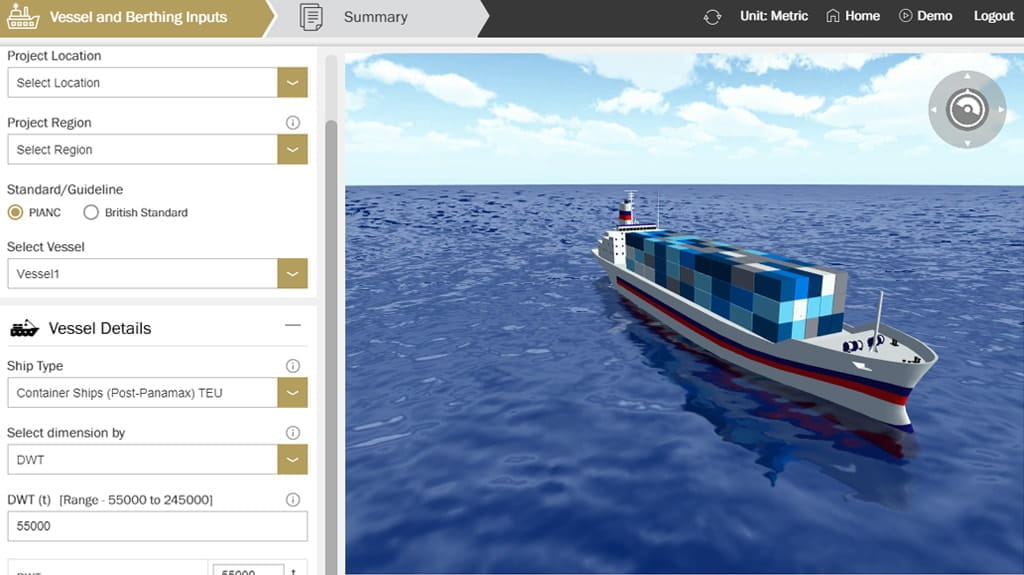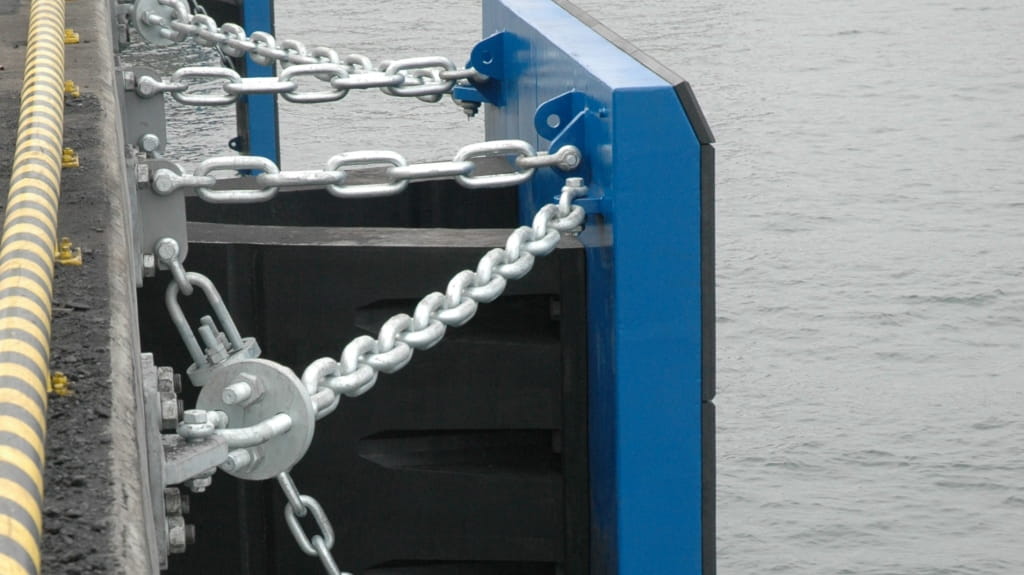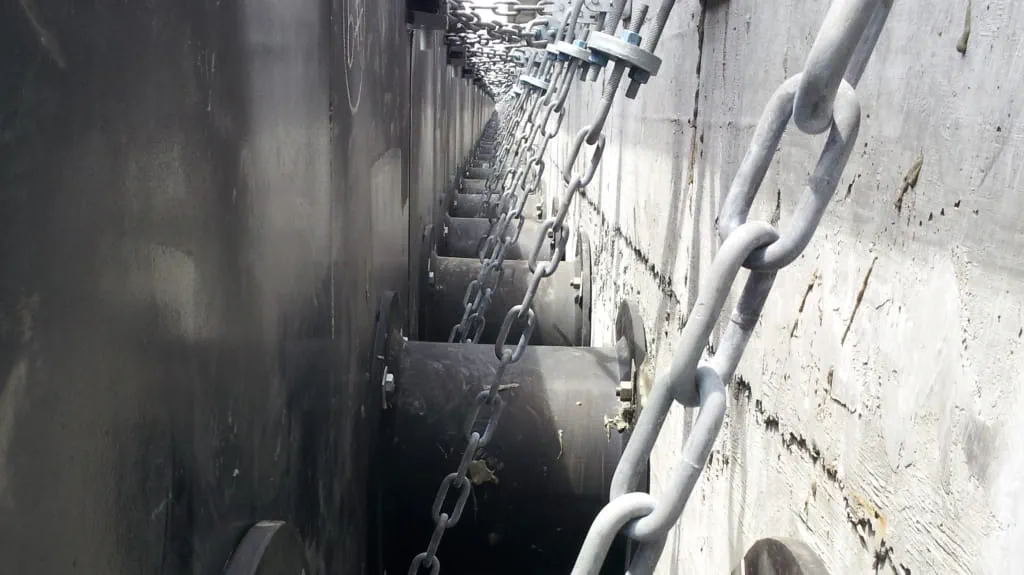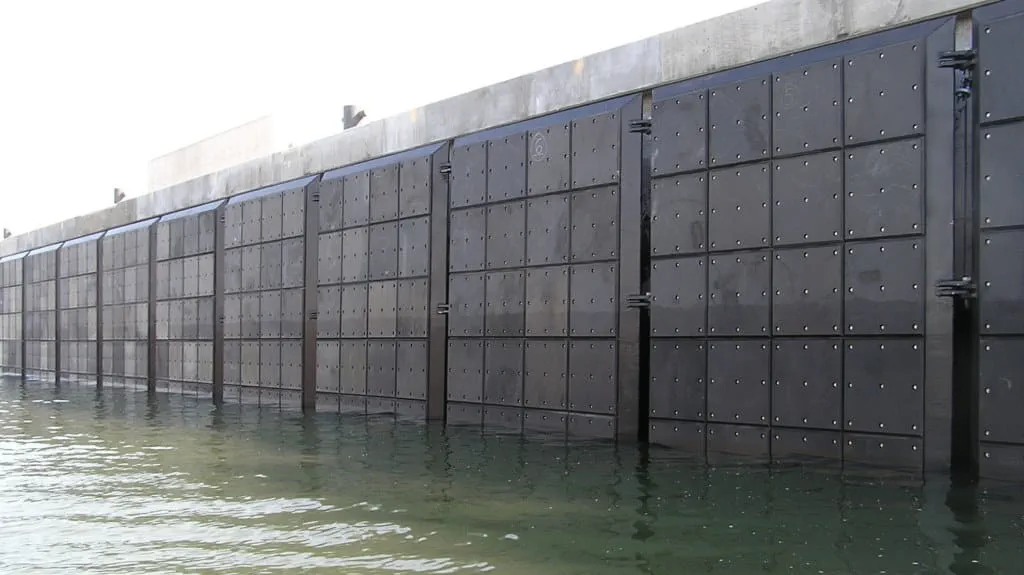
Overview
Fender panels are just as important as the rubber units on high-performance systems. That’s why every panel can be purpose designed using structural analysis programs and 3D CAD modeling for optimum strength.
Fender panels distribute reaction forces to provide low hull pressures and cope with large tidal variations. They can also be designed to resist line loads from belted ships, or even point loads in special cases. Optional lead-in bevels reduce the snagging risk, whilst brackets (where required) provide highly secure connection points for chains. Closed box designs are used almost exclusively – all fully sealed and pressure checked. Corrosion protection is provided by high durability C5M class paint systems to ISO 12944, and additional corrosion allowances can be designed where required.
Fender panels distribute reaction forces to provide low hull pressures and cope with large tidal variations. They can also be designed to resist line loads from belted ships, or even point loads in special cases. Optional lead-in bevels reduce the snagging risk, whilst brackets (where required) provide highly secure connection points for chains. Closed box designs are used almost exclusively – all fully sealed and pressure checked. Corrosion protection is provided by high durability C5M class paint systems to ISO 12944, and additional corrosion allowances can be designed where required.
Features
Lead-in bevels and chamfers
Closed box steel structure
Internal structural members
Blind boss fender connections
Pressure tested for water tightness
C5M modified epoxy paint*
Polyurethane topcoat (RAL5005 blue)†
Studs for UHMW-PE face pads
Chain brackets
Lifting points
Specification & Design
Panel specifications and designs should consider:
Hull pressures and tidal range
Lead-in bevels and chamfers
Bending moment and shear
Local buckling
Limit state load factors
Steel grade
Permissible stresses
Weld sizes and types
Pressure test method
Rubber fender connections
UHMW-PE attachment
Chain connections
Lifting points
Paint systems
Corrosion allowance
Maintenance and service life
Hull pressures and tidal range
Lead-in bevels and chamfers
Bending moment and shear
Local buckling
Limit state load factors
Steel grade
Permissible stresses
Weld sizes and types
Pressure test method
Rubber fender connections
UHMW-PE attachment
Chain connections
Lifting points
Paint systems
Corrosion allowance
Maintenance and service life
